Have you ever wondered what difference a well prepared journey can make? Kailash Mansarovar Yatra is known for its tough terrains, extreme conditions, and high altitudes; thus, the pilgrimage requires extensive preparation. Preparation is not only helpful but is essential to the safety and success of this sacred pilgrimage. Therefore, the blog “Kailash Mansarovar Yatra Preparation” is an ultimate guide for anyone willing to take part in the Kailash Mansarovar Yatra, providing tips on how to overcome the physical, mental, and logistical hurdles of the yatra.
The blog is conveniently broken into sections that address all essentials about health, documents, packing, spirituality, emergencies, altitude, etc. It ensures that the packing is done wisely and leaves no stone unturned in safeguarding health and getting all essential documents. Comprehensive knowledge is provided about preparing both physically and mentally so as to be able to meet the demands that the yatra puts forth. And some practical nuggets like the perfect time to make a visit, do's and don'ts are woven throughout, making the way for your travel smoother and enriching your experiences.
Besides this, other interesting aspects of the journey are brought to light. It also talks about the spiritual role of Mount Kailash and Lake Mansarovar along with varying religious beliefs about the sanctity of this site. Through this blog, Holidays to Nepal strives to guide the pilgrims of the Kailash Mansarovar Yatra long before starting their journey towards a meaningful experience and a successful trip.
What is Kailash Mansarovar Yatra?
The Kailash Mansarovar Yatra is a holy pilgrimage deeply revered by followers of Hinduism, Buddhism, Jainism, and Bon religion. It transits through the autonomous region of Tibet and includes a drive/trek/flight depending upon the route. The yatra lasts from 13 days to a maximum of 17 days, out of which there will be 3 days of trekking at an altitude above 4500 m. The major attractions during this pilgrimage are Mount Kailash at 6638 m and Lake Manasarovar at 4650 m.
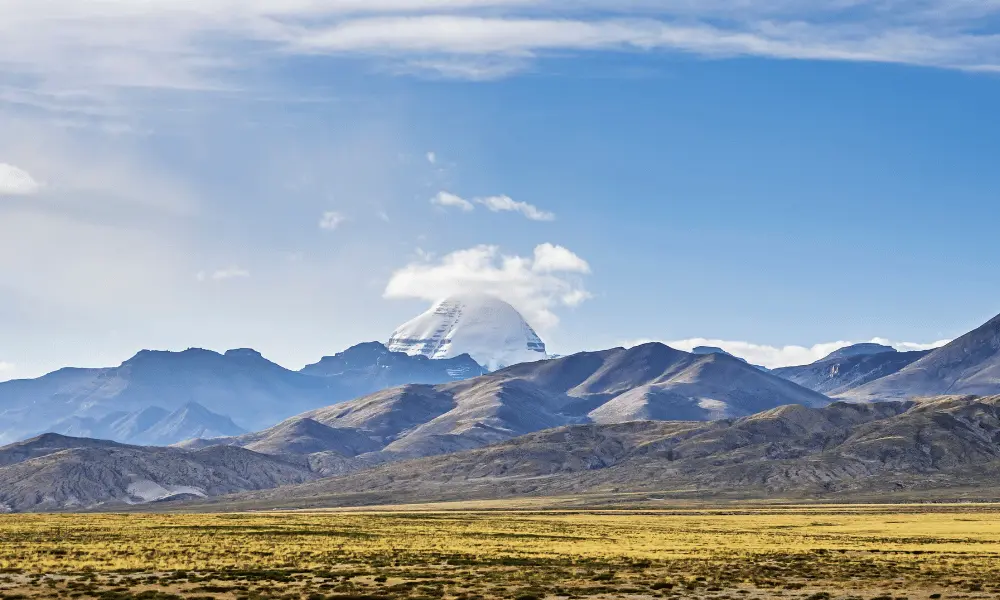
This pilgrimage is largely religious, but with regard to every religion, it has different meanings. Mount Kailash is the sacred dwelling of Lord Shiva among Hindus, while Lake Mansarovar is believed to be created from the manas (brain) of Lord Brahma. For Buddhists, the holy mountain is regarded as Kang Ringpoche, the location where Buddha meditated and the holy lake Mansarovar as Lake Anottata, where Queen Maya Devi bathed to purify herself before conceiving Siddhartha Gautam. The Jains refer to this location as the site where Rishabhadeva, their first Tirthankara, attained enlightenment. The Bon considers it to be the place where all the spiritual powers exist and the center of the universe.
In this yatra, pilgrims circle around Mount Kailash, which is also called "Kora," about 52 km of trek, while the nearby Mansarovar Lake is thought to be the pool of purification as well as a place for pilgrims to indulge in ritual washing and contemplation. As the journey crosses high altitude, rugged terrain, and lonely landscapes, it has been characterized with such adventurous challenges that pilgrims might find rather exciting. Adding to it, this journey is made enthralling by the pristine beauty of Tibet. The Kailash Mansarovar Yatra, though it is physically challenging, witnesses a number of thousands of pilgrims each year who are in quest of not merely religious fulfillment but also a deep connection with the holy, isolated beauty of the Himalayas.
Kailash Mansarovar Yatra Facts
Here are some facts related to Kailash Mansarovar Yatra:
|
Journey |
Kailash Mansarovar Yatra |
|
Trip Duration |
Minimum: 10 Days Maximum: 17 Days |
|
Major Attractions |
|
|
Average Elevation |
4000 m |
|
Maximum Elevation |
5600 m (Dolma la Pass) |
|
Difficulty |
Strenuous |
|
Starting Point |
Kathmandu, Nepal |
|
Ending Point |
Kathmandu, Nepal |
Early Preparation Significance
Kailash Mansarovar Yatra lies extremely remote in the Tibet Himalayas. This yatra necessitates adequate preparation for a safe journey. This pilgrimage is considered an important journey among Hindus, Buddhists, Jains, and Bon followers. It is spiritually rewarding, yet very physically and mentally demanding. These sites above high-altitude terrains and health and safety issues are additional challenges for the pilgrims, making preparation an important aspect of the yatra. Gaining knowledge about the spiritual significance, environmental consideration, and logistical arrangements gives ease to the journey and allows one to have a more profound link with the destination itself. Below are the thorough reasons as to why preparation becomes mandatory for the Kailash Mansarovar Yatra.
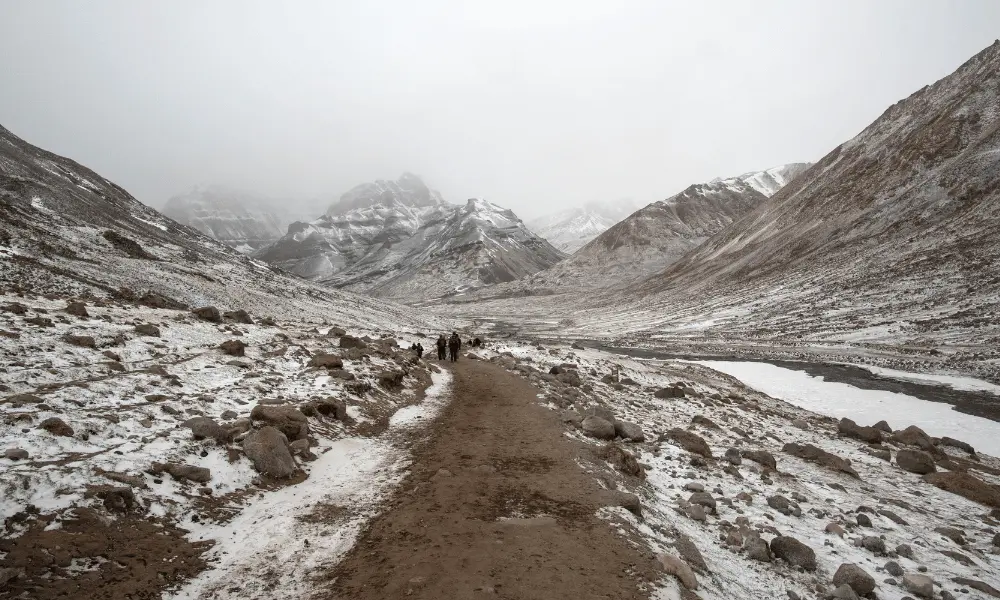
Physical and Mental Challenges
The actual yatra, which is the trek, is a total of 3 days of trekking across 52 KM above 4500 m. One should really be physically fit and should have initial preparation anyway to be able to successfully navigate in the high altitude. The severe, barren landscapes of the Tibetan plateau, combined with long stretches of isolation, can test a pilgrim's mental resilience. Developing patience, perseverance, and calmness is an important part of dealing with such trials.
Health and Safety Concerns
Safety hazards that may be encountered by pilgrims during this yatra include altitude sickness, fitness-related problems, unforeseen weather changes, and limited access to medical facilities. Therefore, prior physical conditioning becomes a mandate, with daily workouts emphasizing strength and breathing techniques to enhance lung capacity.
Spiritual Significance
To insight yourself about the spiritual significance of the yatra that includes the sacred Mt. Kailash and holy Lake Mansarovar uplifts your connection in depth with the place. It immerses you into the atmosphere on a spiritual level of the yatra.
Environmental Responsibility
The fragile ecosystem of the Tibetan Himalayas makes environmental protection a must have responsibility for all pilgrims. Pilgrims can demonstrate their respect for the natural world and the spiritual energy of this area by incorporating eco-friendly activities like recycling all rubbish and avoiding plastics.
Logistics Concerns and Arrangements
As the yatra takes place in the remote region, understanding the logistics, including transportation, accommodation, and other practical aspects, ensures a smooth and comfortable journey, allowing you to focus on the spiritual purpose of the pilgrimage without unnecessary stress. Knowing the travel routes, entry permission, and weather conditions ensures preparedness for any unexpected conditions that might present themselves in the highly unpredictable neighbouring vicinity. In particular, ambience constraints in Derapuk and Zuthulphuk concern toilet availability, which can be uncharacteristically hard for the pilgrims.
Preparation List
Since this yatra involves high-altitude trekking in the remote, rugged terrain of Tibet, proper planning and preparation are important. Important preparation involves health, documents, packing essentials, and some do's and don'ts. Provided is the most significant preparation list one needs to be prepared for the Kailash Mansarovar Yatra:
|
Health Preparation |
|
Documents Preparation |
|
Packing Preparation |
|
Cultural and Spiritual Preparation |
|
High altitude Preparation; Acclimatization tips |
|
Travel insurance and Emergency Preparation |
|
Choosing Right Tour Operator |
Health and Fitness Preparation
Participating in the Kailash Mansarovar Yatra makes good health necessary. Physical and mental well-being plays a very significant role in getting through the tougher stages of a yatra, especially since the yatra is done in remote regions. Therefore, a complete medical check-up and medical preparation, including prevention from altitude sickness, are necessary.

Physical Strength
Kailash Mansarovar Yatra requires a very high level of physical fitness to face all the obstacles that the yatra offers: high altitudes, difficult terrain, and severe weather. To build up strength for the yatra, an individual should begin exercising daily for 3 to 4 months before the trip. Such activities as walking, jogging, or cycling may help you build strength. You might also prepare by practicing some breathing techniques that tend to ease high-altitude difficulties such as altitude sickness.
Medical Readiness
An intensive whole-body check-up is imperative before one goes for the Kailash Mansarovar Yatra. Above 4000 m, you need medical advice and consultation based on existing conditions such as blood pressure irregularities, heart issues, and respiratory disorders. If you regularly take certain medicines, it is recommended that you carry them along in consultation with your doctor.
Mental Preparation
Both physical and mental preparations are requisite parts of undertaking the pilgrimage to Kailash Mansarovar. This is going to be a long and often arduous journey; endurance, patience, and emotional resilience will be tested to their very limits. Meditation and mindfulness exercises help quiet the mind and add focus so that it is possible to remain present in connection with that spiritual significance of the journey.
Document Preparation
All forms of documentation must be completed before commencing the Kailash Mansarovar Yatra. There can be no exceptions, given that this journey crosses international borders, has high-altitude difficulties, and has restricted areas in some stretches. It is, therefore, a must to have adequate paperwork for a smooth passage and concern for one's safety. The right paperwork like a passport, visas, and insurance papers, will allow you to fully concentrate on your spiritual journey without worrying about the administration.

Passport
A valid passport is the first and foremost necessary document for the Kailash Mansarovar Yatra or any international trips. Since the pilgrimage route passes through Tibet, which is within Chinese jurisdiction, passports are necessary for all travelers, including Indian citizens. Basic passport requirements include a minimum of nine months validity from the date you travel. Another important piece of advice is to photocopy and scan your passport for backup in case it is lost or emergencies arise.
Nepalese Visa
Because you will be travelling for the yatra via Nepal except for those government organised Indian groups, you will require a Nepalese visa. All nationals except Indians will require a visa for Kailash Mansarovar Yatra travel.
|
Visa Duration |
Visa Cost |
|
15 days |
USD 30 |
|
30 days |
USD 50 |
|
90 days |
USD 125 |
Note: The visa cost is subject to change; please visit the Nepal Immigration Website for updated information.
Indian pilgrims can enter Nepal with the following documents, as they will not require a visa.
|
For Adults/Aged Above 18: |
For Children/Aged below 18: |
|
A valid Indian passport (at least 3 months before expiry) or voter’s ID (original) or emergency certificate issued by the Embassy of India in Nepal. |
A passport would be the 1st preferred document; if a passport isn’t obtained, a birth certificate with an Aadhar card or school ID or a letter from the school as a supportive document for a birth certificate. |
Tibet Travel Permit
For Tibet, a group visa is given instead of an individual visa due to the Chinese government rules. In addition to the visa, pilgrims need to obtain special permits such as the Tibet Travel Permit (TTP) and the Restricted Area Permit (RAP) if travelling via Hilsa to access certain areas of the country. Kailash tour operators operating Kailash Yatra assist in getting these documents, as they cannot be applied individually. It should also be noted that these documents take time to process; therefore, they should be applied early.
Passport-sized photos
The photographs are passport-sized, color images with a white background, at least eight to ten copies that would be used for various formalities, such as visa applications, permission letters, medical certificates, and other administrative formalities during the yatra. It is advisable to keep both physical and soft copies stored digitally.
Packing Preparation
As you commence with the preparations for the yatra, packing occupies a significant space in the preparatory list. It essentially involves taking a backpack that is easy to carry because of the three day trek and very demanding high altitude. The items that you carry should suit your traveling purposes, like clothes, trekking gear, medications, etc.

Below is a packing essentials list designed to make the yatra much easier.
|
Clothing |
Essential |
Additional |
|
Down Jacket |
Sunscreen |
Small first aid kit |
|
Warm Pants |
Moisturiser |
Trekking Poles |
|
Long Sleeved Shirt |
Wet Tissues |
Sunglasses |
|
Fleece Jackets |
Toilet Paper |
Camera and Batteries |
|
Woollen Socks |
Dust Mask |
Headlight |
|
Thermals |
Sanitizer |
Powerbank |
|
Waterproof Gloves |
Towel |
Snacks |
|
Comfortable Inners |
Dental Kit |
Personal Water Bottle |
|
Rain Jacket |
Documents (Passport, Permits, Visa) and Cash |
Worship Elements |
Learn More: Kailash Mansarovar Yatra Packing List
Cultural and Spiritual Preparation
This is a very sacred pilgrimage through some amazing towns in Tibet and has significance for Hindus, Buddhists, Jains, and the followers of the Bon tradition. To prepare oneself for such a soul journey, one must know and accept each of the rituals and forms associated with it. Also, the pilgrims are expected to have insights on the cultural significance of the yatra beforehand as a way to show respect to the site itself.
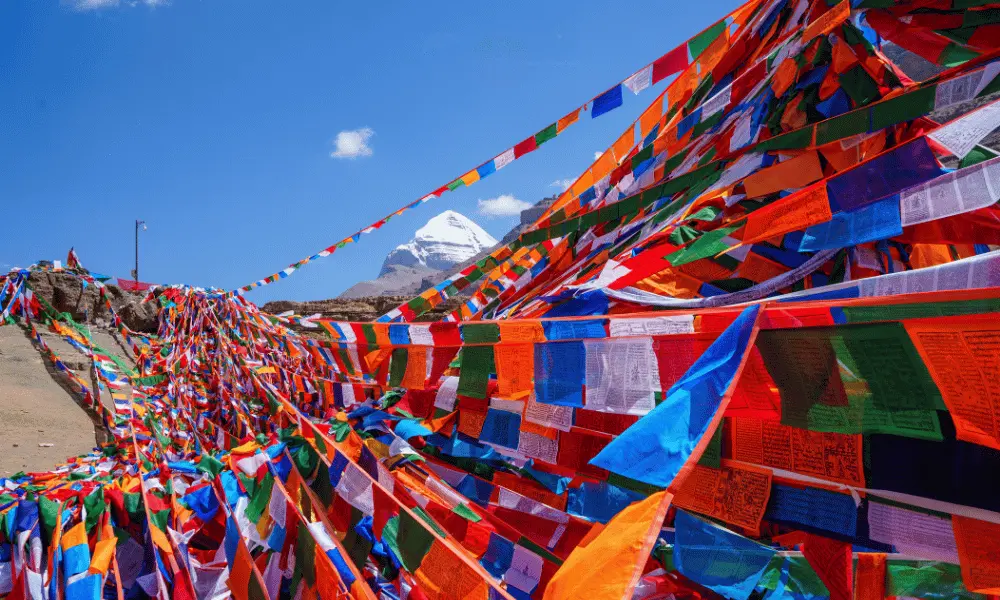
In a spiritual sense, it's a journey toward peace within and a bond with the divine. To prepare for this, one may engage in that practice that promotes patience and practice, both of which will serve through the course of that journey. Moreover, don’t forget the materials you might need to involve yourselves in the religious rituals of the yatra.
High Altitude Preparation
The average altitude of the Kailash Mansarovar Yatra is 4000 m, and the maximum elevation of the yatra is 5600 m (Dolma La Pass). At this altitude, there is less oxygen available in the atmosphere, and a lack of adequate precaution could lead to altitude sickness. The onset of altitude sickness can be felt even by participants who trek actively. Altitude symptoms range from headaches to nausea, dizziness, appetite loss, etc. For a successful pilgrimage, thorough preparation for high altitude and knowledge of acclimatization are paramount.
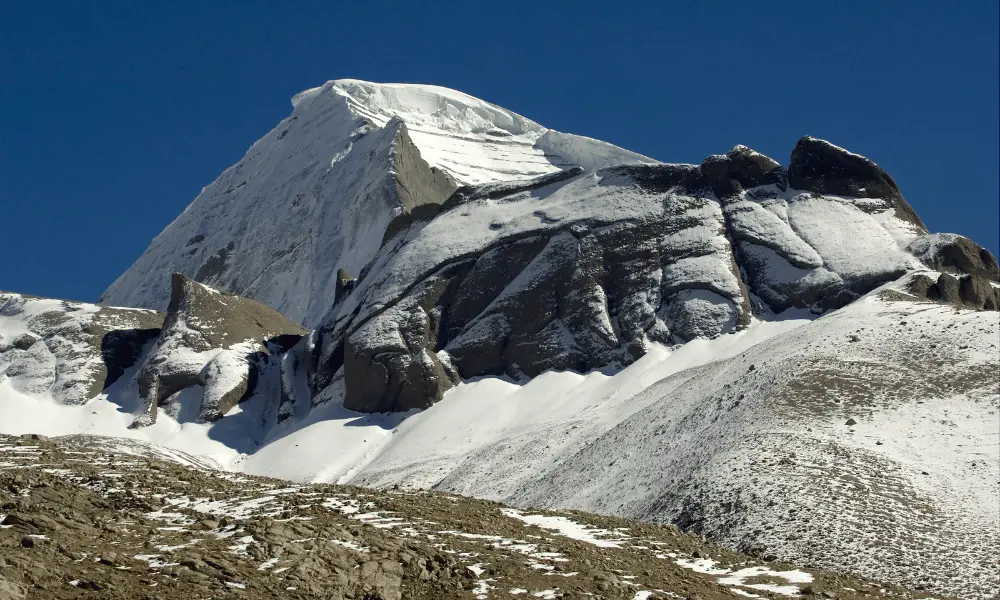
Along with the physical preparation-prior cardio, strength training, and breathing exercises, acclimatisation during the yatra is what prevents sickness. Going slow and taking rest days at altitude gives the body time to adjust to the high altitude. Timely hydration, warm dress, and a calm and positive mental attitude can all help to relieve anxiety and stress that often results from high-altitude stress.
Travel Insurance and Emergency Preparation
Insurance is one of the ways to handle the emergencies that might occur during the yatra. Since this yatra involves going to less accessible high-altitude and difficult terrain areas in the remote Tibet area, it involves many risks. No travel-related risk can be avoided completely; however, it can be minimized. This makes travel insurance and emergency preparation vital components of the yatra. It is recommended to own or purchase comprehensive travel insurance that includes the risks like trip cancellation, emergency evacuation, loss of baggage, and medical coverage and already provides coverage for the yatra.

Also, the emergency evacuations or medical evacuations should include helicopter rescue service in case of altitude sickness, accidents, and/or immediate medical emergencies needing to go down very fast. Most importantly, inform your guide/tour operator of all medical conditions so that they can take immediate action.
Choosing Right Tour Operator
It is very essential to select a proper tour operator for the Kailash Mansarovar Yatra to have a completely safe, smooth, and spiritually enhancing journey. The first step is to find an operator like KailashYatra.Travel who has excellent and long-standing experience in arranging specifically this yatra. Mostly reputable operators have very well-established logistics, well-informed guides, and management in high-altitude stressful situations. Last but not least is the searching phase, with which one may check online reviews, testimonials, and even talk with previous yatris to gauge their credibility.

Equally important is to see if the operator is authorized and recognized by the relevant government authorities. In India, the Ministry of External Affairs manages the yatra through the Lipulekh Pass and it selects the pilgrims through a lottery. However, for private operators, especially those travelling through Nepal or Tibet (via Kyirong or Simikot), they should be associated with a certified local agency in those specific places in order to have the necessary permits. Transparency in their terms and pricing is a nonnegotiable requirement. Do not merely pick the cheapest option-the yatra is physically tough and holds heavy spiritual significance. Hence safety, reliability, and comfort should outweigh costs.
Yatra Guidelines: Do’s and Don’ts
The Kailash Mansarovar Yatra has sacred significance for Hindus, Buddhists, Jains, and Bon followers alike. It is a pilgrimage that takes place in the wilderness of Tibet, and therefore, pilgrims must learn about certain do's and don'ts of this land before carrying out the journey. Such knowledge does not only secure personal safety and health but also reflects sincerity for the cultural and spiritual value that Mount Kailash and Lake Mansarovar hold.
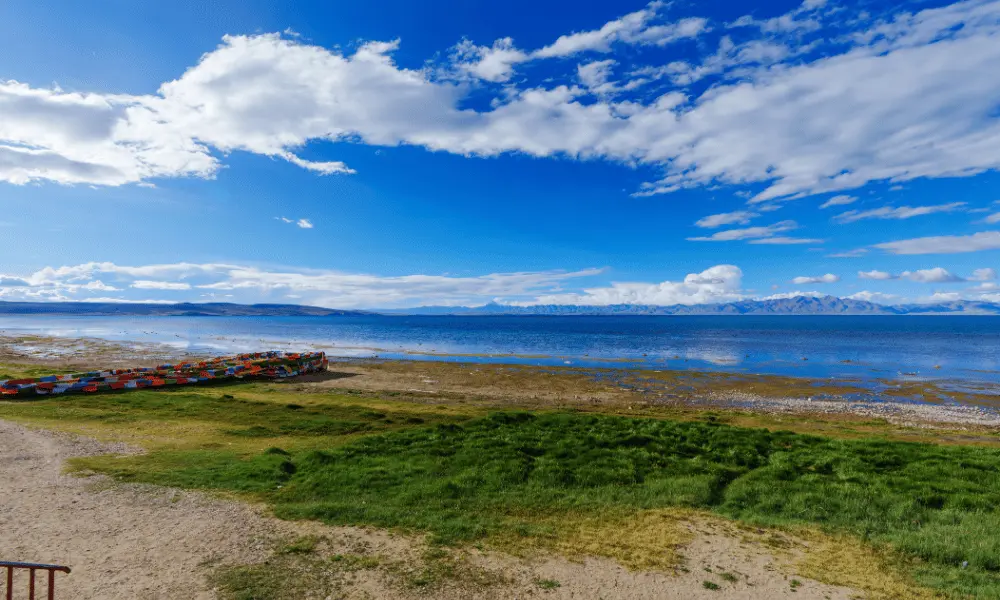
Presented are some do's and don'ts you ought to observe during your journey to Kailash Mansarovar:
|
Dos of the Kailash Yatra |
Don'ts of the Kailash Yatra |
|
Adhere to the local traditions and norms |
Don't need to pack heavily |
|
Acclimate slowly and purposely |
Do not litter in the trail |
|
Listen to your body |
No drinking alcohol or smoking |
|
Minimize environmental impact |
Do not forget important documents |
|
Plan and prepare thoroughly |
Do not swim in Mansarovar Lake |
|
Carry enough local currency |
Do not hurry your journey |
Best Time to Visit
The best time for Kailash Mansarovar Yatra really depends upon your expectations and your preferred mode of travel. Since the yatra is carried out between May and September, the perfect time window to visit falls within this. All the said factors also determine the most appropriate times for your journey, which include considerations of the weather, accessibility, and the types of spiritual or travel experiences you might be looking for.
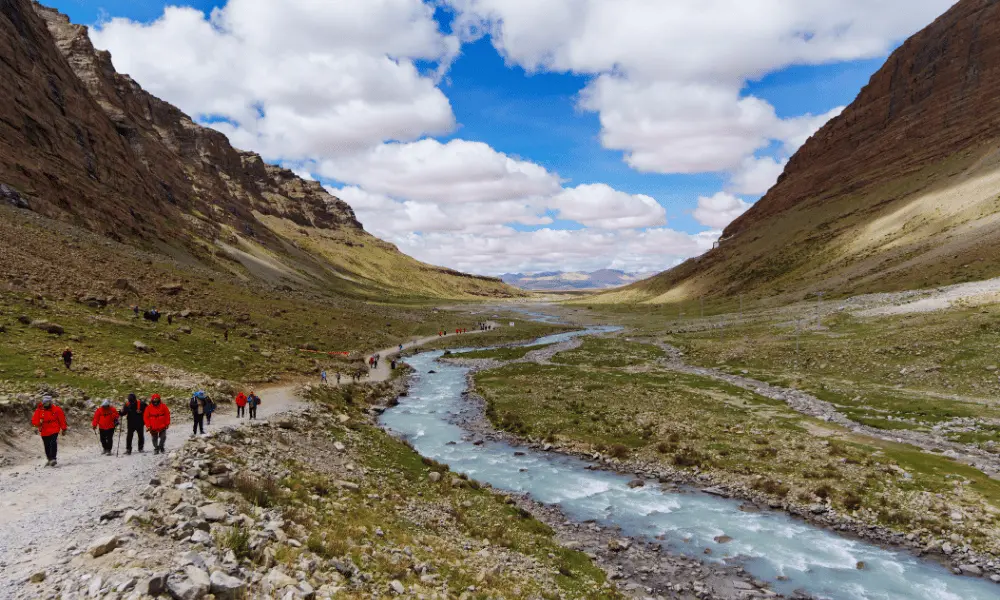
In general, late spring (in June) and early autumn (in August) are considered the most favorable timings for the pilgrimage. During these months, the weather is more or less stable, skies are mostly clear, and the trails are accessible without extreme cold winters or unpredictable summer rain. This means that pilgrims are allowed to enjoy the stunning views of Mount Kailash and Lake Mansarovar along with the calm natural beauty, which adds to the journey's spiritual ambience.
Nevertheless, rainfall during the monsoons may be in some degree a hindrance to travelers from June to August; few would find that agreeable. If triple-billing is what you seek, early September should be preferred, offering a fine combination of good weather plus less company. In the end, it is all up to you; if you love the bustling atmosphere of the peak season or would you prefer to take on a solitary pilgrimage in September?
|
Season |
Temperature |
Features |
|
Winter (Late October to Early March) |
Daytime: 0°C to -15°C Nighttime: Can plummet to -20°C or even lower |
|
|
Spring (March to May) |
Daytime: 5°C to 15°C Nighttime: -10°C or even lower |
|
|
Summer (June to August) |
Daytime: Around 15 °C Nighttime: Around 0°C |
|
|
Autumn (September to early October) |
Daytime: 0°C to 10°C Nighttime: Below 0°C |
|
Learn More: Best Time to Visit Kailash Mansarovar
Conclusion
Kailash Mansarovar Yatra Preparation is a great guide for an individual intending to go on this yatra. One of the most sacred journeys known to mankind, the Kailash Mansarovar Yatra boasts devotees from all parts of the world vying to undertake the journey. This yatra addresses almost all the important aspects associated with the journey, with a view to ensuring that it is not left out of anyone's preparation for the complete journey. The yatra talks about a whole lot of stuff, from understanding the significance of the yatra to the preparation prerequisites, health requirements, documents to be carried, packing for emergencies, practical considerations, such as the best time to visit the place, and many other things.
True to its purpose, it has also prepared the section to train them on how to face the complicated conditions that arise on high altitude trekking, mentally as well as physically. Other than these, it brings in acclimatisation as the guiding principle for accessing the greater elevation, while one could work upon pre-yatra fitness exercises for growing one's endurance and heightening the excitement about overcoming tough terrains. For example, the cultural and spiritual aspects of the pilgrimage allow pilgrims to recognise the journey they will be taking and establish a more profound connection with it.
This preparatory step by step guidance for the pilgrims for undertaking the Kailash Mansarovar Yatra provides a worthy resource towards a safe and successful journey. It addresses the problems that the pilgrimage will bring but also gives possible solutions and preventive methods to encourage readers to take the plunge and join in this life-changing journey educationally, motivationally, and confidently while embracing the spiritual essence of the journey.
Frequently Asked Questions (FAQs)
Here are some frequently asked questions relating to the Kailash Mansarovar Yatra.
What is the difficulty of Kailash Mansarovar Yatra?
The yatra can be challenging due to high altitudes with an average altitude of about 4000 m and a maximum altitude of 5600 m, rugged terrain, and unpredictable weather. A reasonable level of physical fitness and some prior trekking experience are recommended to navigate the challenges of the yatra.
Who is eligible for the Kailash Mansarovar Yatra?
Kailash Mansarovar Yatra is open to all eligible persons as per the specified criteria of age and health; given the arduous and high-altitude nature of the trek, these parameters have been laid. For Indian pilgrims, the age limit is between 10 and 70 years; however, there is no age limit for Nepali and NRI pilgrims. Also, individuals suffering from serious health conditions such as heart disorders, high blood pressure, and lung disorders must abstain from undertaking this yatra.
How can I reach Kailash Mansarovar?
There are three main ways to get to Kailash Mansarovar from Nepal. They are overland via the Gyirong border and by helicopter via Nepalgunj.
- By drive via Kyirong border: This is a good option if you are looking for a more adventurous trip. The journey from Kathmandu to Kailash is 10 days, and you will need to cross the border between Nepal and China at the Gyirong Border.
- By flight via Lhasa: It is one of the popular routes for Kailash Mansarovar Yatra. The flight takes off from Kathmandu to Lhasa and drives towards the destination. It also includes a visit to Everest Base Camp from the Tibet side. It is about 11 days of a two way journey from Kathmandu.
- By helicopter via Nepalgunj: It is the most expensive option, but it is also the fastest way to get to Kailash Mansarovar. The helicopter tour takes about 1 day from Simikot in Nepal to Hilsa in Tibet.

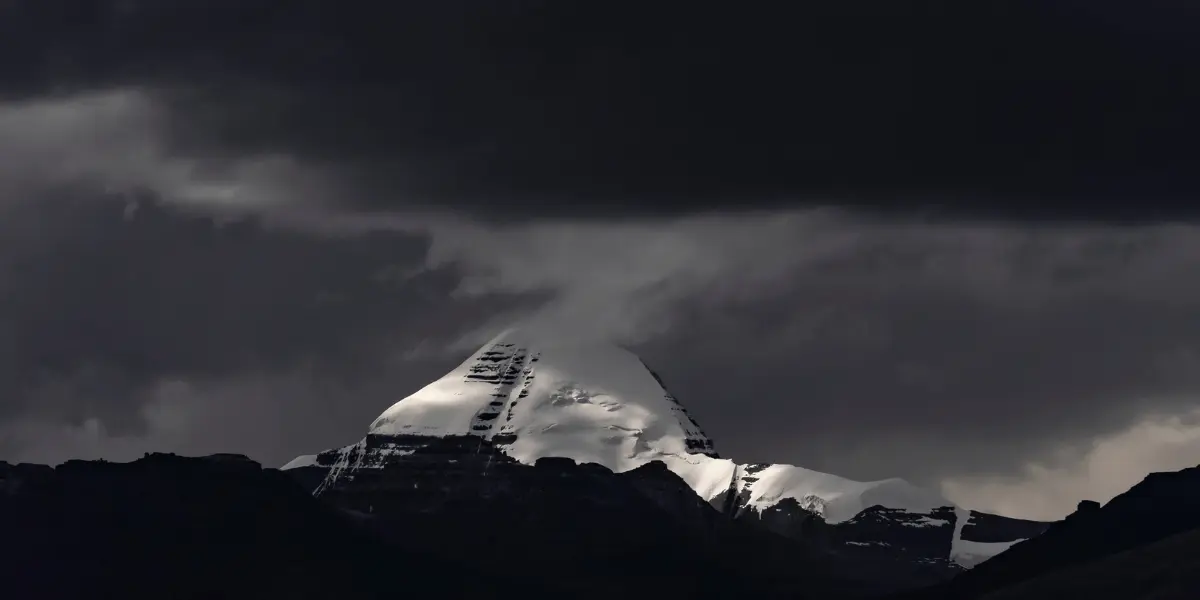
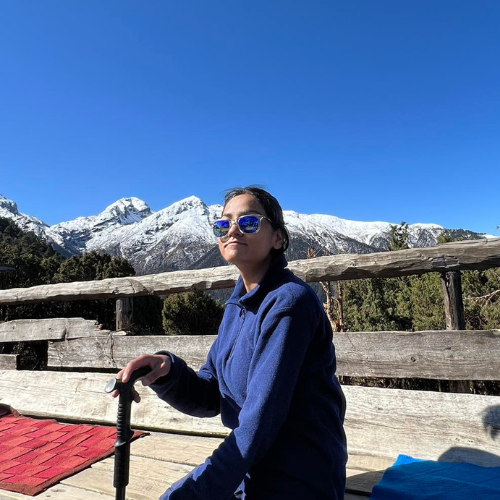 Mandira Itani
Mandira Itani